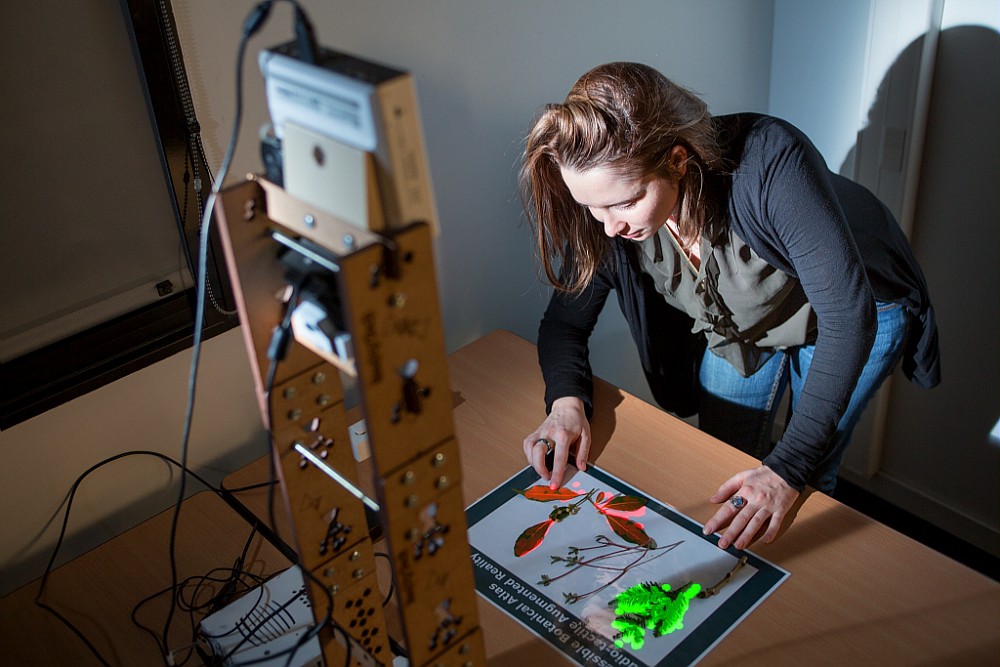Section: New Results
Mixed reality based interfaces for visual impaired persons
Participant: Lauren Thévin, Anke Brock
Current low-tech Orientation & Mobility (O&M) tools for visually impaired people, e.g. tactile maps, possess limitations. Interactive accessible maps have been developed to overcome these. However, most of them are limited to exploration of existing maps, and have remained in laboratories. Using a participatory design approach, we have worked closely with 15 visually impaired students and 3 O&M instructors over 6 months. We iteratively designed and developed an augmented reality map destined at use in O&M classes in special education centers. This prototype combines projection, audio output and use of tactile tokens, and thus allows both map exploration and construction by low vision and blind people. Our user study demonstrated that all students were able to successfully use the prototype, and showed a high user satisfaction. A second phase with 22 international special education teachers allowed us to gain more qualitative insights. This work shows that augmented reality has potential for improving the access to education for visually impaired people [18].
We have pursued this work to make the visual and audio augmentation of real objects easy and convenient. In a user study, six teachers created their own audio-augmentation of objects, such as a botanical atlas (Figure 6, within 30 minutes or less. Teachers found the tool easy to use and were confident about re-using it. Participants found the resulting interactive graphics exciting to use independently of their mental imagery skills [32].



